Cristigera phoenix (Penard, 1922)
Most likely ID: n.a.
Synonym: n.a.
Sampling location: Purren pond, Ulmisried, Bussenried, Bündtlisried, Simmelried
Phylogenetic tree: Cristigera phoenix
Diagnosis:
- body oval or ellipsoid, dorso-ventrally flattened
- length 35–50 µm
- anterior end with a frontal plate
- ventral side with a deep furrow running longitudinal
- oral apparatus in the middle of the furrow
- undulating membrane on left side of oral opening is pouch-shaped
- macronucleus oval or elliposoid, on right side of body
- one micronucleus adjacent to the macronucleus
- one caudal cilium, inserted on right side of the postoral furrow
- one contractile vacuole in the posterior third on the left side of the furrow
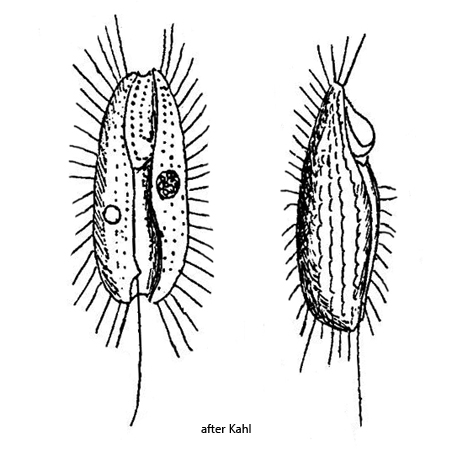
Due to the shape of Cristigera phoenix with a ventral furrow, Penard was reminded of a date palm kernel (Phoenix dactylifera) when he described the ciliate in 1922. That is from which the species name is derived. I find Cristigera phoenix frequently and regularly especially in floating detritus flakes in old samples.I find Cristigera phoenix frequently and regularly especially in floating detritus flakes in old samples.
By the ventral furrow the species can be clearly identified as Cristigera phoenix. The similar species Cristigera minor is smaller and plumper. Cristigera penardi and Cristigera pleuronemoides have also a ventral furrow but the mid-body of these species is naked.
In a slightly squashed specimen I could observe that the cilia of the kineties are arranged in pairs (s. fig. 3 a) while Kahl drew them solitarly. The contractile vacuole was also shifted more to the posterior end in my specimens than Kahl drew it (s. drawing above). Possibly this is within the usual variability. Otherwise all features agree with the description and drawing of Kahl.
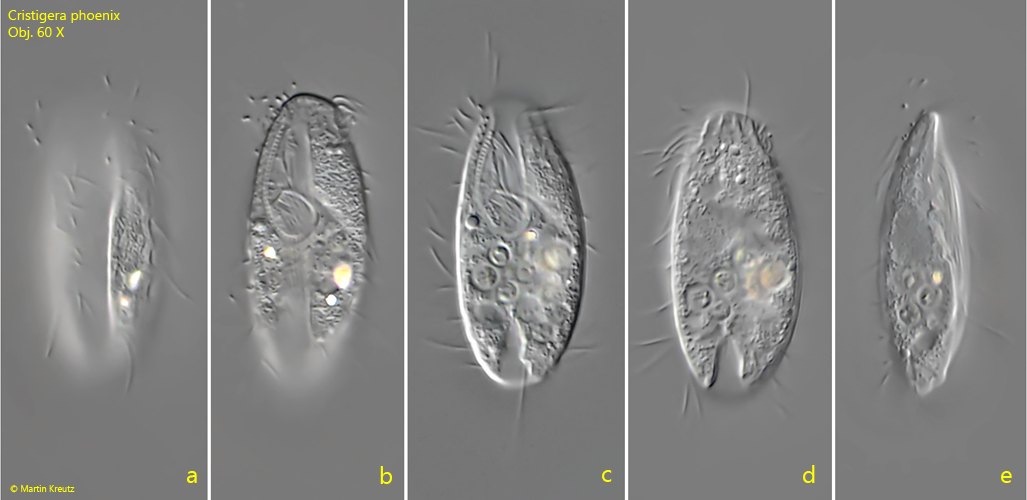
Fig. 1 a-e: Cristigera phoenix. L = 34 µm. Different focal planes of a freely swimming specimen from ventral (a–d) and laterally from right (e). Obj. 60 X.
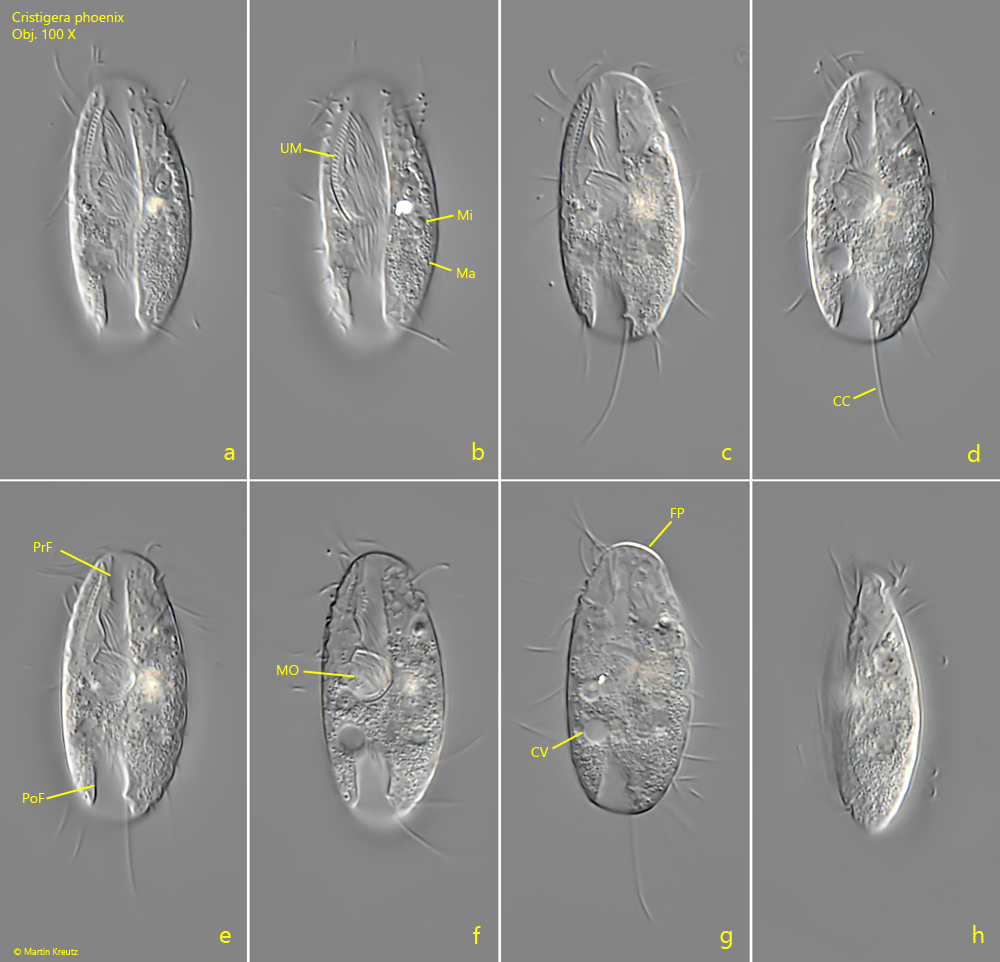
Fig. 2 a-h: Cristigera phoenix. L = 31 µm. A freely swimming specimen from ventral (a–g) and laterally from left (h). Note the ventral furrow divided in a praeoral (PrF) and postoral part (PoF) by the mouth opening (MO). The undulating membrane (UM) with long cilia is on the left side of the oral apparatus and the caudal cilium (CC) inserted at the right side of the postoral furrow (c, d). CV = contractile vacuole, FP = frontal plate, Ma = macronucleus, Mi = micronucleus. Obj. 100 X.
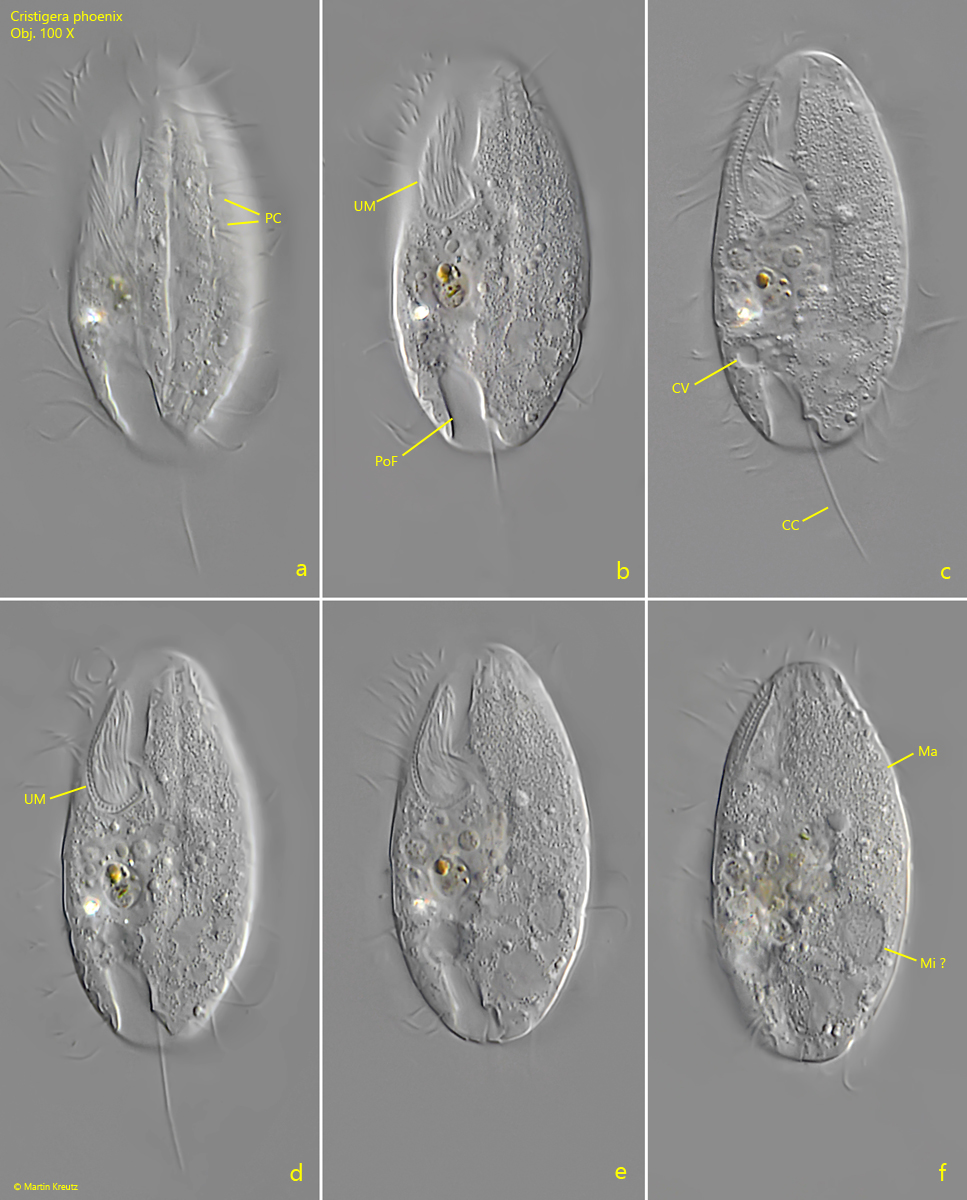
Fig. 3 a-h: Cristigera phoenix. L = 48 µm. A slightly squashed specimen from ventral. Note the paired cilia (PC, a) of the kineties. CC = caudal cilium, CV = contractile vacuole, FP = frontal plate, Ma = macronucleus, Mi = probably the micronucleus, PoF = postoral furrow, UM = undulating membrane. Obj. 100 X.
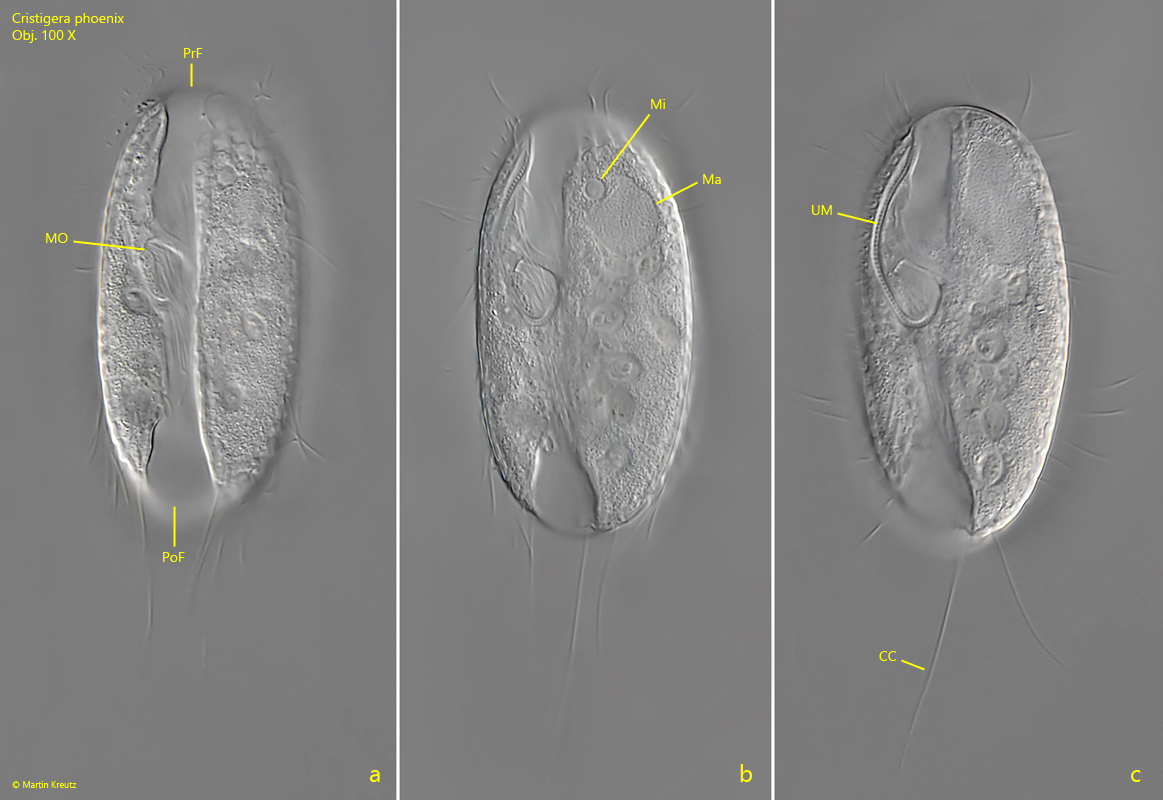
Fig. 4 a-c: Cristigera phoenix. L = 58 µm. A freely swimming larger specimen. CC = caudal cilium, Ma = macronucleus, Mi = micronucleus, MO = mouth opening, PoF = postoral furrow, PrF = praeoral furrow, UM = undulating membrane. Obj. 100 X.